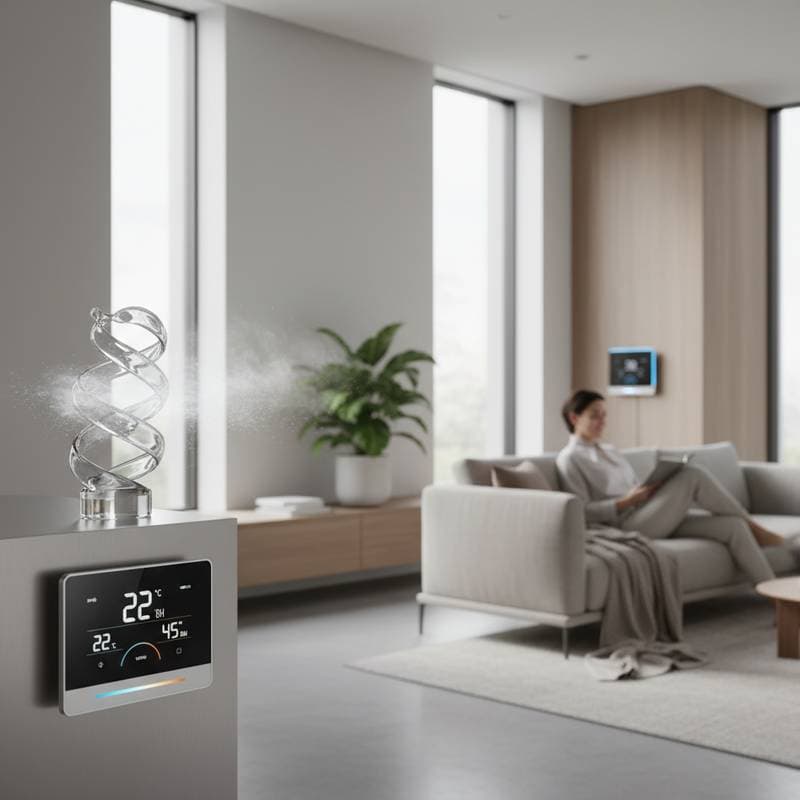How Dual-Fuel Hybrid HVAC Systems Lead in 2025
Homeowners increasingly select dual-fuel hybrid HVAC systems for superior efficiency, consistent comfort, and dependable operation. These systems integrate a gas furnace with an electric heat pump, switching automatically according to outdoor temperatures. This approach yields reduced energy expenses, decreased emissions, and reliable indoor climate control throughout the year.
Understanding Dual-Fuel Hybrid HVAC Systems
A dual-fuel system employs two heating sources: an electric heat pump for moderate conditions and a gas or propane furnace for extreme cold. The control board determines the optimal energy source to ensure efficient performance. When temperatures fall below the heat pump's effective range, the furnace activates, providing heating without excessive energy consumption.
Reasons Homeowners Adopt Dual-Fuel Systems
Several compelling benefits drive the adoption of dual-fuel systems:
- Energy savings through selection of the most cost-effective fuel for current conditions, which lowers yearly heating expenses.
- Consistent comfort via seamless transitions between electric and gas modes, maintaining stable indoor temperatures across seasons.
- Environmental advantages from reduced carbon output during electric operation in milder weather.
- Extended equipment longevity due to even distribution of workload among components.
- Flexibility in fuel choices, allowing use of natural gas or propane based on local availability and pricing.
Installation Cost Breakdown
Installing a dual-fuel HVAC system generally ranges from $6,000 to $12,000. Retrofitting an existing system for dual-fuel functionality typically costs $3,500 to $8,000, depending on compatibility.
| System Type | Average Cost |
|---|---|
| Complete dual-fuel installation | $6,000 to $12,000 |
| Dual-fuel furnace replacement | $4,000 to $9,000 |
| Heat pump replacement | $3,500 to $8,000 |
| Conversion kit and setup | $1,200 to $2,500 |
| Smart thermostat upgrade | $200 to $600 |
| Metric | Amount |
|---|---|
| National average cost | $8,500 |
| Minimum cost | $3,500 |
| Maximum cost | $12,000 |
| Average cost range | $6,000 to $10,000 |
Cost data derives from industry research and reported project expenses.
Elements Affecting Dual-Fuel System Costs
Multiple factors influence the expense of installing or replacing a dual-fuel HVAC system.
- System size: Larger residences demand greater capacity units, elevating both equipment and labor expenses.
- Fuel type: Propane options frequently incur higher operating costs than natural gas owing to price variations.
- Efficiency rating: Units with superior furnaces and advanced heat pump compressors command higher initial prices yet yield long-term savings.
- Brand quality: High-end manufacturers provide enhanced warranties and reliability at a premium.
- Ductwork condition: Repairs or replacements to existing ducts may add $1,000 to $3,000.
- Installation complexity: Challenging locations, such as confined crawl spaces or rooftop placements, necessitate extra labor.
- Regional climate: Colder regions increase reliance on the furnace, impacting sizing and fuel requirements.
Efficiency and Performance Benefits
Dual-fuel systems optimize operation across diverse temperatures. The heat pump manages primary heating and cooling duties efficiently in moderate conditions. In severe cold, the gas furnace engages automatically to maintain effectiveness.
This configuration achieves up to 30 percent reduction in heating costs relative to conventional gas-only setups. Pairing with programmable thermostats enables adjustments based on current energy rates, further enhancing savings.
Essential Maintenance Practices
Regular upkeep preserves performance and efficiency. Homeowners must:
- Replace air filters every one to three months.
- Arrange annual professional inspections for the furnace and heat pump.
- Clean condenser coils and exterior units periodically.
- Inspect fuel lines and safety mechanisms.
- Ensure vents and registers remain clear.
Annual professional services cost $150 to $300 and encompass cleaning, testing, and efficiency evaluations.
Evaluating Repairs Versus Replacement
Assess system age, repair frequency, and efficiency when deciding between repair and replacement. Systems over 10 years old with recurring issues often benefit from replacement to avoid escalating costs. Common repairs include thermostat malfunctions ($150 to $350), coil cleaning ($100 to $400), or blower motor fixes ($500 to $1,500).
Replacement proves economical if repairs exceed 50 percent of a new system's price or if the unit operates below 80 percent efficiency. Consult a certified technician to analyze energy usage and forecast long-term expenses.
Strategies to Lower Installation Expenses
- Obtain quotes from at least three licensed HVAC professionals.
- Seek rebates or tax incentives from local utilities for efficient models.
- Time installations for off-season periods to benefit from reduced demand.
- Select ENERGY STAR certified units for sustained savings.
- Perform routine maintenance to prevent expensive future repairs.
Frequently Asked Questions on Dual-Fuel Systems
In what manner does a dual-fuel system reduce expenses?
It chooses the most efficient energy source according to temperature, minimizing fuel consumption and utility payments.
Is conversion of an existing HVAC system to dual-fuel possible?
Yes, provided the current setup features a heat pump or compatible furnace. Technicians install conversion kits for integration.
Do dual-fuel systems suit every climate?
They excel in areas with fluctuating seasons, including occasional freezing temperatures alongside extended moderate periods.
What is the typical lifespan of a dual-fuel system?
Proper maintenance extends most systems to 15 to 20 years.
Does a dual-fuel system demand unique maintenance?
Requirements mirror standard HVAC care, with annual checks required for both furnace and heat pump components.
Preparing for Your Dual-Fuel Upgrade
Begin by evaluating your home's heating needs and current system compatibility. Contact certified contractors for assessments and detailed proposals. Consider integrating smart controls to monitor and optimize performance from the outset. This upgrade not only trims immediate costs and emissions but also secures enduring comfort and value for your residence.



